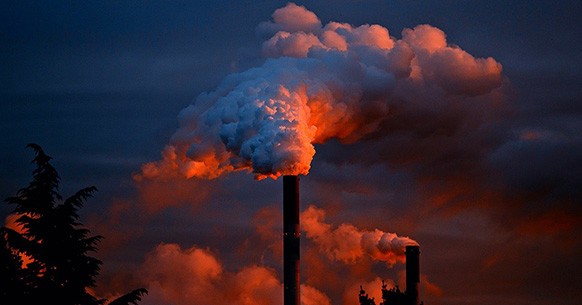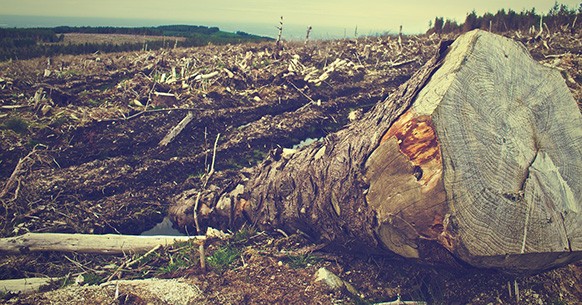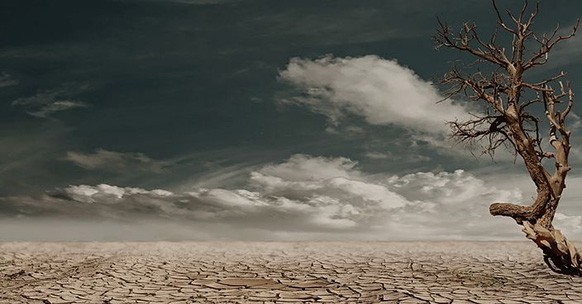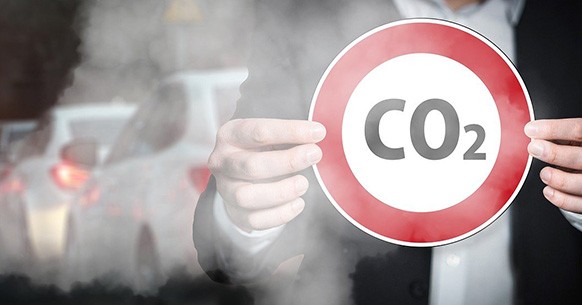Global warming is a serious problem that we can no longer ignore. There are many causes of this phenomenon that can represent damage to the Earth and to all its life forms. Scientists have long been warning about the effects on the Planet and on man. But they are not listened to. And the point of no return is getting closer and closer, for a planet that, as Greta Thunberg said, is now a house on fire.
The theme of the global warming is now of the utmost topicality. More and more frequently we hear about the increase in temperatures on the planet, connected to climate changes and mostly due to human activities.
Yet the conversation is often difficult to understand, it is not easy to understand what the so-called global warmingand public opinion feels helpless in the face of an increasingly real threat. So what is meant by global warming, what are the causes and what are the possible remedies?
Although the topic of global warming finds today a strong and broad scientific consensus, before starting it is necessary to underline that there is also a small front against this hypothesis. Below, all the useful information.
What is global warming
The term global warming refers to a climatic phenomenon related to therising temperatures Earth’s averages. More precisely, the definition – often also referred to as climate warming, global warming or global warming – refers to the increase in temperatures due to human activities.
The phenomenon has become increasingly evident since the end of the 19th century, in full industrial growth, and today it has reached worrying dimensions. In fact, it is feared that the average world temperature could increase by 2 degrees compared to pre-industrial levels, a threshold that could accelerate climate change, with disastrous consequences for humanity.
The first alarm bell was the emission of fumes and exhaust gas industrial in the atmosphere, with the discovery of the greenhouse effect: the thick blanket of carbon dioxide and other pollutants alter the layers of the atmosphere itself, modifying solar radiation and slowing the natural cooling of the soil.
Despite the doubt that human activities could modify the Earth’s temperatures, it is only in recent times that the problem has been recognized not only at a scientific level, but also at a political level. The first real commitment to combat global warming came in 1997, with the signing of the Kyoto Accordsthen renewed and made more stringent in 2015 with the Paris Agreements and in 2021 with those of Glasgow.
Storia del global warming
As already mentioned, although the political recognition of global warming has been quite recent, science has been studying it for over a century. Already in 1824, for example, the mathematician Joseph Fourier he had noticed how the Earth should be colder in relation to the heat actually released by the sun’s rays, thus hypothesizing other causes for the increase in temperatures.
The theme of thegreenhouse effector the altered absorption of red solar radiation due to excess carbon dioxide in the atmosphere, has been discussed since 1904 thanks to Niels Ehkholm. And since 1960, thanks to the work of Charles David Keeling, CO2 measurement has been standardized and growth monitored on an annual basis.
However, we had to wait until 1979 for the first World Climate Conferencewhile the issue of solar heating will not enter the US Senate until 1988, when James Hansen presented the results of climate models developed by NASA. In 1990, the first report of the Intergovernmental Panel on Climate Change (IPCC) was issued, in 1997 the Kyoto Accords, in 2015 those of Paris and in 2021 those of Glasgow.
Causes of Global Warming

There are different ones cause at the basis of global warming, not all of human origin, even if the latter seem to be those with the greatest impact on the rise in temperatures. We can therefore distinguish two large groups:
- Causes external to mansuch as variations in solar activity, the cycle of geological eras, sudden factors such as impacts with asteroids and other space bodies;
- Cause umanedue to pollution, deforestation and the emission of harmful gases.
As already mentioned, human ones have a greater weight on the fate of the Planet and, for this reason, it is worth analyzing them in detail.
Gas serra
For over a century, the Earth’s temperatures have been slowly but steadily increasing. The main reason is the release into the atmosphere of the so-called gas serrareleased from industrial plants, from road, air and maritime traffic, from intensive farming and agriculture and much more.
Among the various substances released into the atmosphere, three are most responsible for the greenhouse effect:
- Carbon dioxide;
- Methane;
- Water vapor.
The production of water vapor It is mostly natural, for example due to the slow evaporation of the oceans and constitutes the so-called natural or basic greenhouse effect.
Loss of natural heritage

Human activities also determine the progressive loss of natural heritage world, one of the main sources of contrast to the increase in temperatures. Among the most relevant phenomena, we list:
- Deforestation and logging: the loss of green heritage limits the absorption of carbon dioxide and the production of oxygen, causing higher concentrations of CO2 in the atmosphere;
- Ice loss: the progressive decrease of perennial ice reduces the Earth’s ability to reflect solar rays, thus warming the ground. This is the so-called albedo effect, the white areas of the globe are essential for containing temperatures;
- Natural gas release: geological processes, such as volcanic ones, naturally release a certain amount of carbon dioxide and other greenhouse gases into the atmosphere. As a result of increased terrestrial heat and therefore the melting of permafrost, significant quantities of methane are released that were once trapped by the ice, increasing the greenhouse effect.
Environmental pollution
It’s not just theair pollution to determine a worsening of global warming, environmental warming also has a certain responsibility. The spread of harmful chemicals, plastic and waste in the environment modifies the ability of ecosystems to regenerate, threatening the biodiversity.
The alteration of biodiversity leads to the extinction of some plant species that are essential for the absorption of carbon dioxide and other greenhouse gases. A problem that is already very evident at the ocean level where, due to the presence of plastic and other waste, some algae are taking over, choking out other species known to trap huge amounts of CO2.
Effects of global warming

As you can easily imagine, the increase in temperatures at a global level entails some consequences important on the Planet as a whole. Global warming threatens the survival of plant and animal species and of man himself. And it does not only have environmental effects, but also affects the social, economic and health development of the various countries of the world.
Environmental consequences
Unfortunately, the increase in temperatures has many consequences on the environment as a whole. Among the problems that are already evident today, we list:
- Desertification of areas once rich in flora;
- Tropicalization of the climate in the once temperate zones of the planet;
- Ice melting perennials at the poles and loss of mountain glaciers;
- Rising sea levels and flooding of coastal areas;
- Increase in phenomena such as hurricanes, floods, landslides and avalanches;
- Increased frequency of fire;
- Reduction of drinking water globally;
- Extinction of numerous animal and plant species;
- Death of the coral reef.
Economic consequences

The increase in temperatures and the alteration of ecosystems also determine some indirect economic consequences:
- Shortage of foodstuffs and increase their prices;
- Rapid growth of inflation;
- Limited availability of raw materials for industry;
- Problems in the production of energy from both fossil and renewable sources;
- Fewer job vacancies;
- Widespread poverty.
Health consequences
The unstoppable growth in temperatures obviously also has effects on salute of the man:
- Return of diseases once eradicated due to lack of drinking water;
- Malnutrition due to the difficulty of following a balanced diet, given the scarcity of basic foodstuffs;
- Greater diffusion of virus e bacteria already known, with increased risk of serious pandemics and easier species jumps from animals to humans;
- Increase in the incidence of some types of cancersuch as lung cancer or melanomas, given the air rich in substances harmful to the body and a more harmful exposure to ultraviolet rays.
Social consequences
Finally, there are also social consequences, which could also lead to situations of strong political instability. Among the most likely, experts include:
- Growth of the migration flows from the warmest areas of the world to the more temperate ones;
- Risk of civil wars for the research of food raw materials;
- Global conflicts between nations for the control of scarce natural resources, minerals and fossils.
Remedies for global warming

But what are the remedies for global warmingwhat are the most appropriate solutions to limit the pace of climate change? Unfortunately, there is currently no single recipe, even if experts all agree on the urgent need to reduce CO2 emissions into the atmosphere.
Among the proposals currently being studied, the areas of application concern:
- Limitation of the CO2 emissions at industrial level with compensation plans, for example with the obligation to reforest green areas;
- Abandonment of fossil fuels for electricity production, favoring renewables instead;
- Elimination of plastic, especially disposable plastic, preferring instead more sustainable materials such as paper, cardboard, glass and aluminium;
- Widespread implementation of the electric mobility to reduce fossil fuel pollution;
- Modification of domestic heating systems, with the installation of latest generation boilers, capable of significantly reducing the exhaust fumes produced;
- Local flora and fauna restoration plans with repopulation programmes;
- Modification of the human dietto reduce dependence on intensive farming;
- Implementation of systems for capturing and storing CO2 and other pollutants.
Source: www.greenstyle.it


